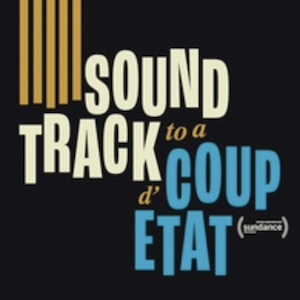The Magnificent Age of Film Noir
By Baishali Banerjee
There are visual techniques in filmmaking that have a direct effect on our viewing. One of the first of these dramatic visual elements was Film Noir, a way to highlight the darkness of a character and the lightness of another. The contrast of extreme light to dark came from paintings (chiaroscuro) and was adopted by European filmmakers to bring mood and emotion to their creations. Hollywood then went to pick it up and made it world renowned. Film Noir is the French for ‘dark films’. The word “film noir” was first adopted by French critics to describe the subdued lighting employed to stylistically enhance these dramas, but it would not catch on in other countries’ critical communities until Raymond Borde and Étienne Chaumeton’s book Panorama du cinema noir Americain (1955) was published. To know more, read The Magnificent Age of Film Noir.
Book Cover MPTV Images
Film Noir was a genre of films that became prevalent mainly during the post-World War II era in American crime dramas. With the advent of the Second World War, a new tone in film drama became apparent: a gloomy, foreboding atmosphere that stemmed as much from the characters portrayed as it did from the cinematographer’s skill. The darkness of these films reflected the disillusionment of those times. The 1930s Great Depression and the subsequent global war caused an increase in pessimism and disillusionment in the American psyche. Banned in countries affected by the war, these films became widely in European countries in 1946.

Sunset Boulevard MPTV Images
Reel Art Press brings back a glimpse of the Film Noir age in November 2022, which reveals unseen images and previously unpublished outtakes from Night of the Hunter and Sweet Smell of Success, and classic stills from films like Gilda, Double Indemnity and Lady From Shanghai.

Lady From Shangai MPTV Images
For their icy, cynical protagonists and dark, brooding manner, French cineastes liked them, and they lavished the pictures with acclaim in publications like Cahiers du cinéma. When the French cinema critic referred to these movies as “film noir,” a genre in and of itself evolved, including such classics as Double Indemnity, The Woman in the Window, Touch of Evil, and Sunset Boulevard. Cynical heroes, stark lighting effects, frequent use of flashbacks, intricate plots and an underlying existentialist philosophy used to be the most prevalent elements characterized in the style of filmmaking, especially in American crime dramas.
A-list celebrities like Robert Mitchum, Barbara Stanwyck, Rita Hayworth, Orson Welles, and Humphrey Bogart are discussed alongside the best character actors of the time (Gale Sondergaard, Jean Brooks, Dolores del Rio, George Raft).

The Big Sleep MPTV Images
Some of the early instances of Noir style are Dark, stylised detective movies like John Huston’s The Maltese Falcon (1941), Frank Tuttle’s This Gun for Hire (1942), Otto Preminger’s Laura (1944), and Edward Dmytryk’s Murder, My Sweet! (1944).
FILM NOIR Photographs is a collector’s edition of crucial genre portraits by studio photographers that helped define a period, like Robert Coburn, Ernest Bachrach, and A.L. Whitey.
The book also includes photographs from classic B-noirs like Gun Crazy and The Hitchhiker to please the most ardent cinephile. It was written by two of the UK’s most well-known authorities on film noir and film art, respectively. Nourmand’s unrivalled understanding of cinematic art is well complemented by Duncan’s insightful and knowledgeable remarks.

Gilda Poster MPTV Images
These photographs, which make up an excellent selection of the best portrait photography from the Film Noir era, are still among the most inventive and striking portraits in movie history and possess the same raw power as they did back in the 1940s.
Film historian, editor, and author Paul Duncan is a specialist in film noir. In addition to editing almost 50 books in the series and authoring several of them, he founded Pocket Essentials in 1999. His works include Martin Scorsese, Alfred Hitchcock, Film Noir, and Noir Fiction. The Godfather Family Album, Taxi Driver, Film Noir, Horror Cinema, The James Bond Archives, The Charlie Chaplin Archives, and publications on movie actors, genres, directors, and posters are just a few of the titles he has edited for Taschen. He has also contributed to over 50 volumes on film.
On the other hand, Tony Nourmand is a leading figure in the field of cinematic images. He co-founded the premier original film poster gallery in the world, which he held for more than 20 years. From 1992 to 2003, he served as the vintage movie poster consultant for Christie’s, London. Tony has organized some of the most prestigious private and public collections in the world and has participated in international exhibitions. On the subject of movie posters and film, Tony has edited more than 20 best-selling volumes. Reel Art Press was founded by him, and he serves as its principal editor.

Spiral Staircase MPTV Images
A distinctive curatorial eye and excellent style are what REEL ART PRESS (RAP) stands for. It represents elegance and luxury, the finest production standards, and sensitivity to a wide range of subject matter and material. It stands for uncommon, unreleased work, encompassing topics with broad appeal and small runs with limitless potential. With its earlier offerings, which include Hollywood and the Ivy Look, Led Zeppelin by Led Zeppelin, Black in White America: 1963-1965, The 2001 File, and Billy Name: The Silver Age, the company has garnered international attention.
If you enjoyed reading The Magnificent Age of Film Noir, why not try reading Smells like Disco.
.Cent Magazine, Be Inspired; Get Involved.






